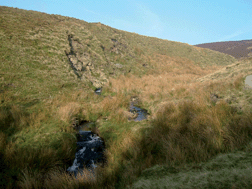The biogeochemistry of arsenic in a remote UK upland site: trends in rainfall and runoff, and comparisons with urban rivers
Abstract
Ten years of monitoring of rainfall and streams in the remote acidic and acid sensitive moorland and afforested moorland of upland mid-Wales reveals concentrations of arsenic (As) typically <1 µg L−1. On average, the lowest concentrations occur within rainfall and they have declined over time probably in response to reductions in global emissions. There is a corresponding reduction within the streams except for forested systems where concentrations up to doubled following clear-fell. Within the streams there are both annual cycling and diurnal cycling of As. The annual cycling gives maxima during the summer months and this probably reflects the importance of groundwater inputs and mineralisation/desorption from the surface soil layers. Correspondingly, the diurnal cycling occurs during the summer months at low flow periods with As concentrations highest in the afternoon/evening. For the urban/industrial basins of northern England with historically a much higher As deposition, land contamination and effluent discharges, comparative data indicate As concentrations around three fold higher: strong seasonal patterns are observed for the same reasons as with the uplands. Across the sites, the As concentrations are over an order of magnitude lower than that of environmental concern. Nonetheless, the results clearly show the effects of declining emissions on rainfall deposition and some indication of areas of historic contamination. Arsenic is mainly present in the <0.45 fraction, but cross-flow


 Please wait while we load your content...
Please wait while we load your content...